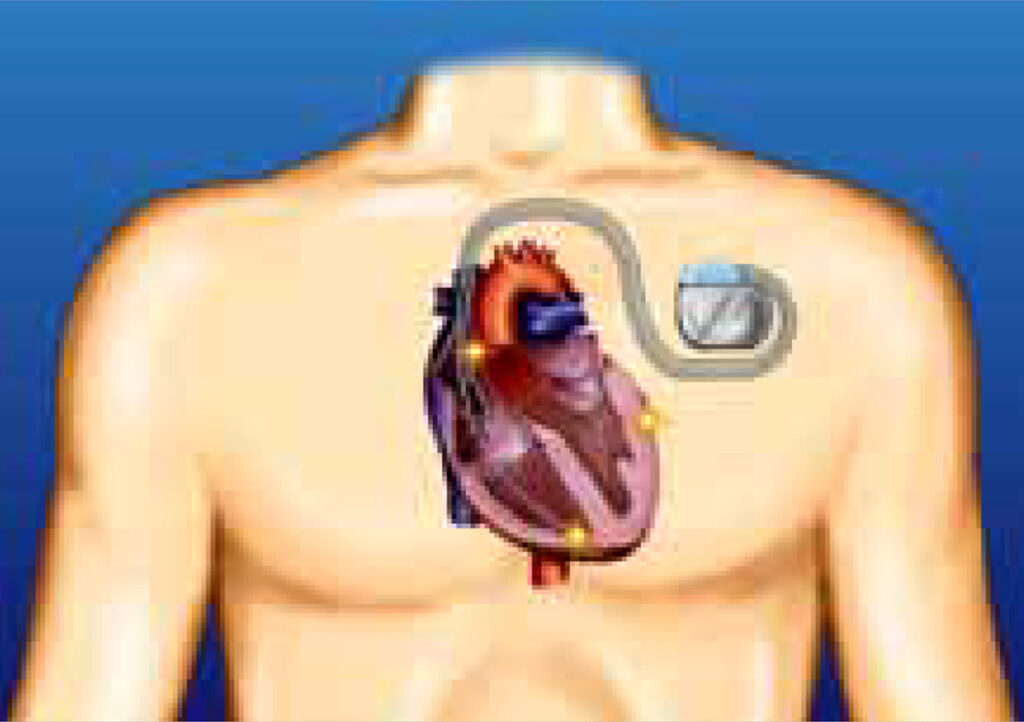Implantable Cardioverter Defibrillators
An implantable cardioverter defibrillator (ICD) is a device a little bigger than a matchbox and capable of sending an electric current through the heart to prevent sudden death from a heart attack.
Some patients refer to them as their own personal paramedic.
The ICD is ‘implanted,’ or put in your body surgically and has two main parts, a pulse generator and one or more leads. The pulse generator constantly keeps track of your heartbeat. It’s like a small computer that runs on a battery. The lead is a wire from the pulse generator to the inside of your heart. It sends signals from your heart to the ICD and then sends an electric current from the pulse generator back to your heart.
Why do we need this innovation?

Normally, your heart has a natural ‘pacemaker’ and its own electrical system. If your heart is working properly, an electrical current starts in one of the upper chambers of the heart (the atria) and travels through the heart to the bottom chambers (the ventricles). The different chambers need to work together to produce a regular heartbeat. If they are not coordinated, then blood won’t circulate properly around your body.
Sometimes, your heartbeat may become irregular. A heartbeat that is not regular is called arrhythmia, which means that your heart chambers are not beating in a coordinated way. Treatment for arrhythmia depends on what kind of arrhythmia you have. Some arrythmias may cause milder symptoms such as dizziness but others can be fatal. You may need an ICD if you have had or are at high risk of having certain life-threatening arrhythmias.
Attack of the Facts
Fact 1
If an ICD notices a dangerous heart rhythm, it can automatically deliver three lifesaving treatments straight away:
- PACING – a series of low-voltage electrical impulses at a fast rate to correct the heart rhythm.
- CARDIOVERSION – one or more small electric shocks to restore the heart to a normal rhythm.
- DEFIBRILLATION – one or more larger electric shocks to restore the heart to a normal rhythm.
Fact 2
ICDs are miniature, internal versions of the large paddles paramedics use to shock people back to life after a cardiac arrest. After a sudden cardiac arrest, quick treatment is vital, for every minute that passes without defibrillation, the chances of survival decrease by 14%.
Fact 3
An ICD gives many patients more peace of mind as it will automatically treat their arrhythmia if their heart begins to beat irregularly.
Fact 4
Each year, about 4,500 people in Britain have an ICD fitted.
